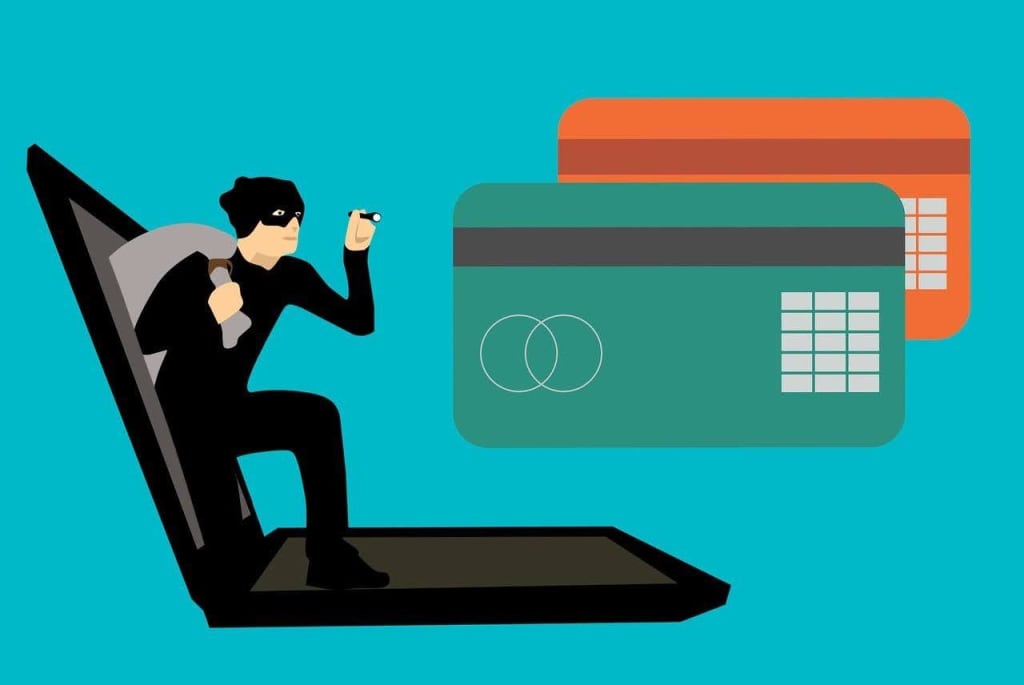
Image by Mohamed Hassan from Pixabay
Credit Card Fraud on the Rise: Tips to Protect Yourself
Team PaisaSimple • July 10, 2024
It is important to shield your credit card transactions. With the rising cases of credit card fraud, you must be careful now more than ever. And learning a few ways to protect yourself from fraud will go a long way.
Credit card fraud is when a scammer uses your card details to commit fraudulent transactions without your knowledge. These frauds are classified as identity theft and are on the rise. What’s alarming is how almost all these scams appear to be genuine financial scenarios.
Fraudsters use sophisticated techniques to commit credit card fraud. The ingenious ways you can lose a chunk of your account balance are shocking.
We’ll tell you about the different ways cc fraud can happen and how you can protect yourself and your loved ones by detecting them.
The Different Types of Credit Card Fraud
Skimming
Skimming is a card-present (requires a physical credit card) fraud. The fraudster will use a device called a ‘skimmer’ to carry out this scam. The skimmer is placed over POS or other payment-receiving terminals to capture your credit card information.
Precaution: Check the credit card reader for signs of tampering. Most of these readers are equipped with tamper-preventing seals. Check for these seals the next time you suspect a device.
Phishing
Phishing is an online scam where scammers send you fake messages or emails, replicating a legitimate business or organisation. They will try to steal your personal information, credit card details, or bank details. An example of phishing is a link claiming you have won a gift from a lucky draw.
Precaution: Never open suspicious links. No bank or government organisation will ask for your personal information under any circumstance. If you receive a message from your bank, visit your branch to confirm.
Card-not-present
Card-not-present or CNPs are frauds where scammers make purchases without a physical card. These are the most common types of cc fraud. And unfortunately, these scams go unpunished.
Precaution: Do not share your card details with anybody. Block your card if you detect a fraudulent transaction.
Hacking
Another popular type of financial fraud is when hackers hack your mobile phone or computer to gain access to your credit card information. Hacking has advanced to a stage where hackers can hack websites you’ve visited and steal your information.
Precaution: Do not download apps or software from unreliable sources. And be careful not to click links from random emails or messages.
6 Tips to Protect Yourself from Credit Card Fraud
Credit fraud detection is not easy; it takes constant monitoring and vigilance. Credit card fraud detection agencies use several resources and efforts to keep your data safe. But on an individual level, here are some tips to protect your credit cards.
Check your statements regularly
Monitor your payment activity frequently for unauthorised transactions. Contact your bank and flag a transaction if you find it suspicious.
Always carry out complete transactions
Ensure you complete every transaction. If you second-guess a transaction, clear your credit card details before exiting the app or website.
Protect your CVV number
Never share your credit card’s CVV number with anyone. International transactions require only your credit card number and CVV. They do not ask for an OTP. Scammers can use your card details to make foreign transactions.
Be cautious of phishing emails and messages
Do not click every link—even if it appears to be sent by your bank. Practice caution while opening these links. If you are unsure, visit your bank’s branch office to ensure the link’s authenticity. Also, do not click links that promise rewards too good to be true.
Use your card only on trusted websites
Be extremely careful not to disclose your credit card details on suspicious websites. Make use of reputed web tools to ascertain the authenticity of the websites.
Set spending limits
Set spending limits on your card. If you are carrying out a transaction that exceeds this limit, increase it momentarily in the card’s app. But remember to revert the limit as soon as you complete the purchase. Set limits for contactless payments or tap-to-pay on your card.
Conclusion
Credit card fraud is on the rise; it is our duty to be vigilant and mindful to prevent misuse of our financial assets. As a responsible consumer, do not open suspicious links from unknown sources. If you receive a phone call or a link from someone posing as a bank manager, cut the call and visit your branch to confirm this link’s authenticity.
Follow our tips to prevent credit card fraud and protect your cards. Remember that credit card fraud detection is not easy for most of us. Therefore, monitor your credit card statements and contact your card issuer for dubious transactions.
Frequently Asked Questions
What is credit card fraud?
What is credit card fraud detection?
How can I detect fraudulent transactions on my credit card?
How do I prevent fraud on my credit cards?
